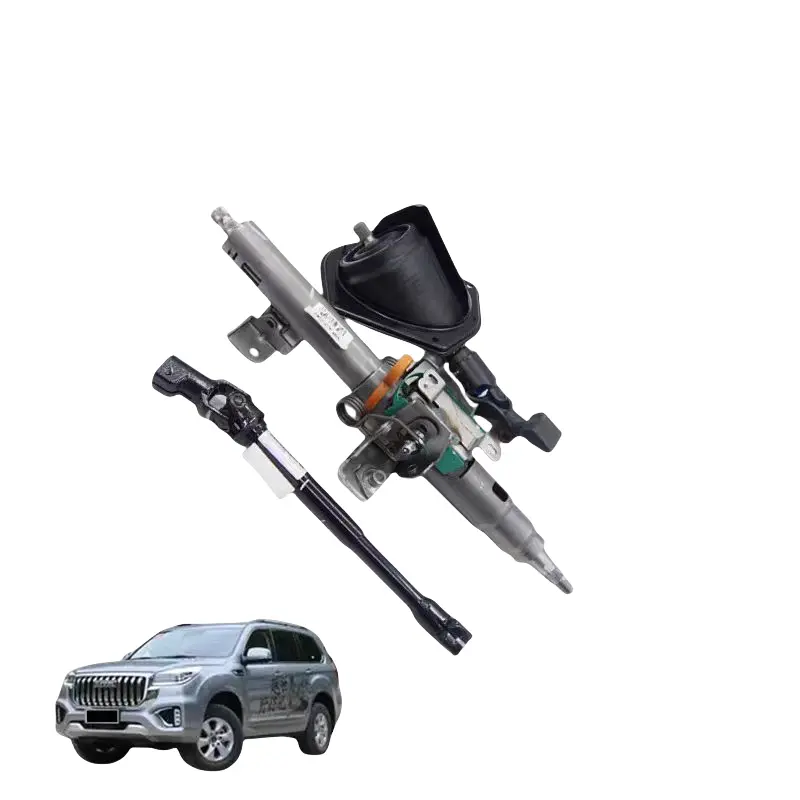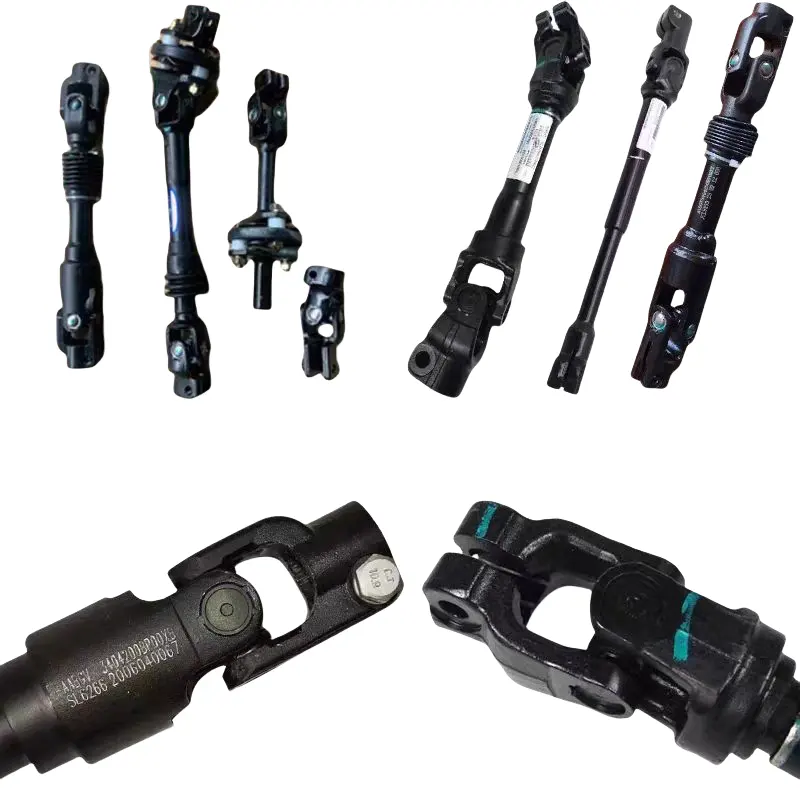U-Joint Steering Column Shaft: The Reliable Bridge for Automotive Steering
Release time: 2025-08-22
In a vehicle’s steering system, each component plays an indispensable role, working together to precisely transmit the driver’s intentions to the wheels. Among these, the U-joint-equipped steering column shaft is a crucial, though often overlooked, safety component. Like a loyal messenger, it ensures that steering commands are transmitted stably and efficiently, no matter the road conditions or vehicle posture.
What is a U-Joint Steering Column Shaft?
The steering column shaft typically refers to a drive shaft connecting the steering column (directly linked to the steering wheel) to the steering gear (or rack and pinion system). The “U-joint” is the core design element. It is not a simple U-shaped metal block but refers to a cross-shaped universal joint or similar structure.
This structure allows two connected shafts to rotate freely within a certain angle. In simple terms, it acts like a flexible “joint” that allows power transmission without being limited to two completely straight, rigid connections.
Core Function: Why is it the “Key Pivot” in the Steering System?
The U-joint steering column shaft’s core value lies in solving a fundamental problem in steering systems: the relative motion between the vehicle body and the chassis.
Adapting to Angle Changes, Seamlessly Transmitting Power
- As a vehicle drives, the suspension system continuously moves up and down, causing changes in the distance and angle between the vehicle body and the axle (where the steering gear is mounted).
- If a rigid straight shaft were used, it could become stuck or even break during suspension movement, leading to steering failure or component damage.
- The introduction of the U-joint perfectly solves this issue. It allows the steering shaft to pivot at multiple angles, adapting to the suspension’s movements and ensuring that the torque transmitted from the steering wheel is smoothly and continuously delivered to the steering gear, regardless of the wheel’s position.
Filtering Vibrations and Impacts, Enhancing Driving Comfort
In addition to transmitting steering force, this “flexible joint” also helps absorb and filter out small vibrations and shocks from the road. This prevents these forces from being directly transmitted through the steering column to the steering wheel, improving driving comfort and smoothness and reducing driver fatigue.
Providing Installation Flexibility for Assembly Layout
For automotive manufacturers, the U-joint design offers greater flexibility in the layout of the engine bay. Engineers no longer need to sacrifice the space of other components just to create a perfectly straight line. They can more efficiently arrange the engine, transmission, and other assemblies.
Ensuring Steering Safety: A Critical Safety Component
As a core link in the power transmission path, the strength, wear resistance, and fatigue resistance of the materials used in the U-joint steering shaft directly impact driving safety. A high-quality, reliable U-joint steering shaft is essential for ensuring the normal operation of the steering system under all conditions. It is a safety component that cannot afford to fail.
Vehicles It Fits: Widely Used Across Various Models
Due to its irreplaceable functional advantages, the U-joint-equipped steering column shaft is widely used in many types of vehicles. It is particularly common in models using a steering gear with a circular planetary system or those requiring long-distance power transmission.
- Commercial Trucks and Buses: These vehicles have a high chassis and large suspension travel, resulting in significant relative motion between the body and the axle. They rely on U-joint-equipped steering shafts to connect these components.
- Pickup Trucks and Off-Road SUVs: Built with a non-load-bearing body design, these vehicles have a powerful suspension system. During off-road conditions, the axle’s movements can be extreme. The U-joint ensures steering remains controllable even in harsh conditions.
- Some Passenger Cars and MPVs: Even for passenger cars with a load-bearing body, suspension movements during driving can still cause geometric changes. While some models use a rack and pinion steering system with a direct connection, many models—especially rear-wheel drive (FR) or those with specific layouts—use a U-joint-equipped intermediate steering shaft for power transmission.
Nosen offers U-joint-equipped steering column shafts that, with their unique flexible connection design, cleverly resolve the interference between the vehicle body and the chassis movements. They ensure precise and reliable steering commands, making them an essential cornerstone for driving safety and comfort, whether for daily commuters or heavy-duty trucks.


